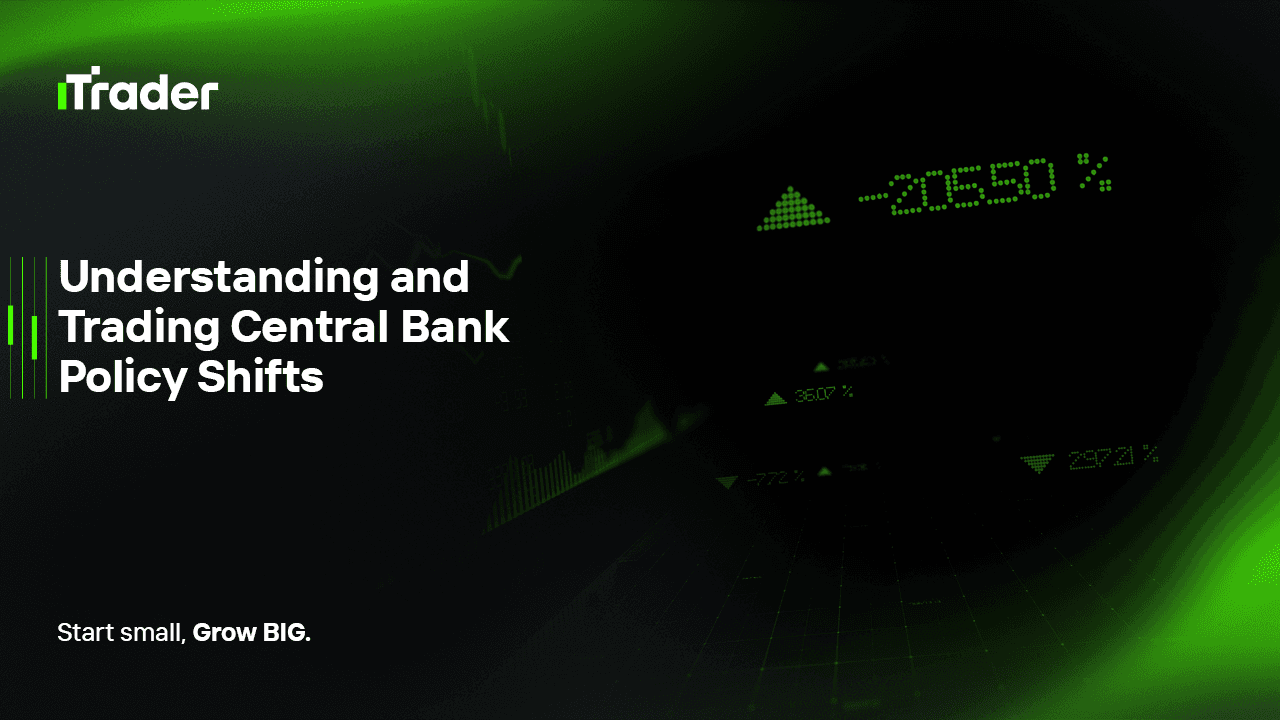2025-08-28
The forex market is one of the most sensitive arenas in global finance. Exchange rates not only respond to day-to-day technical fluctuations but also to major macroeconomic policy decisions. Among these, the most powerful drivers are monetary policy shifts by central banks.
Institutions like the U.S. Federal Reserve (Fed), European Central Bank (ECB), Bank of Japan (BOJ), and Bank of England (BoE) regularly influence global capital flows through interest rate decisions, quantitative easing (QE), balance sheet adjustments, and policy guidance. These decisions ripple across the forex market, creating both risks and opportunities.

For prop traders, understanding and anticipating central bank policy shifts is not just about catching a trade—it’s a strategic edge. Prop firm challenges measure not only short-term profitability but also how effectively traders manage risk in volatile, news-driven conditions.
Central banks operate with three main goals:
They achieve these through various policy tools:
Interest rates are the most direct channel through which central banks influence currency values.
This concept underpins the classic Interest Rate Differential strategy, where traders position based on relative yields between economies.
Markets react not only to the decision itself but also to how it aligns with prior expectations:
Central bank policy affects currencies via multiple channels:
In certain cases, central banks intervene directly, buying or selling their currency to stabilize exchange rates. The BOJ, for instance, has stepped in to curb excessive yen weakness.
When central banks follow opposite policy paths, strong forex opportunities emerge. Example: Fed tightening vs. ECB easing led to EUR/USD weakness in 2014–2015.
For prop traders, the risk around central bank events is heightened volatility. Effective practices include:
The Swiss National Bank removed its EUR/CHF floor, causing the franc to surge ~30% within minutes. Many retail and institutional traders were wiped out.
Successive Fed hikes boosted USD strength across major pairs, rewarding traders who anticipated the policy cycle.
Policy tweaks and interventions triggered strong yen volatility, creating both risks and short-term opportunities.
Since firms evaluate risk discipline, traders must:
Prop traders need to interpret not just the numbers but also the tone of central bank communication. A single phrase in a press conference can move markets. Skills include:
Central bank monetary policy is one of the dominant forces shaping forex markets. For prop traders, mastering this area provides both protection against unnecessary risk and an edge in capturing high-probability setups.
Ultimately, central bank policy sets the rules of the forex game. Traders who can read, anticipate, and adapt to these rules are far more likely to pass prop firm challenges and thrive in live market conditions.
© 2025 iTrader Global Limited | 公司注册号 15962
iTrader Global Limited 位于科摩罗联盟安儒昂自治岛穆察姆杜 Hamchako,并受科摩罗证券委员会(Securities Commission of the Comoros)许可及监管。我们的牌照号为 L15962/ITGL。
iTrader Global Limited 以“iTrader”作为交易名称,获授权从事外汇交易业务。公司的标志、商标及网站均为 iTrader Global Limited 的专属财产。
风险提示: 差价合约(CFD)交易因杠杆作用存在高风险,可能导致资金快速亏损,并非适合所有投资者。
交易资金、差价合约及其他高杠杆产品需要具备专业知识。
研究显示,84.01% 使用杠杆的交易者会遭受亏损。请务必充分了解相关风险,并确认在交易前已做好承担资金损失的准备。
iTrader 特此声明,不会对任何个人或法人在杠杆交易中产生的风险、亏损或其他损失承担全部责任。
本网站提供的新闻及信息仅用于教育目的。用户应独立且审慎地作出金融决策。
限制条款: iTrader 不会向法律、法规或政策禁止此类活动的国家或地区居民提供本网站或相关服务。若您居住在限制使用本网站或服务的司法管辖区,您有责任确保遵守当地法律。iTrader 不保证其网站内容在所有司法管辖区均适用或合法。
iTrader Global Limited 不向以下国家/地区的公民提供服务,包括但不限于:美国、巴西、加拿大、以色列及伊朗。